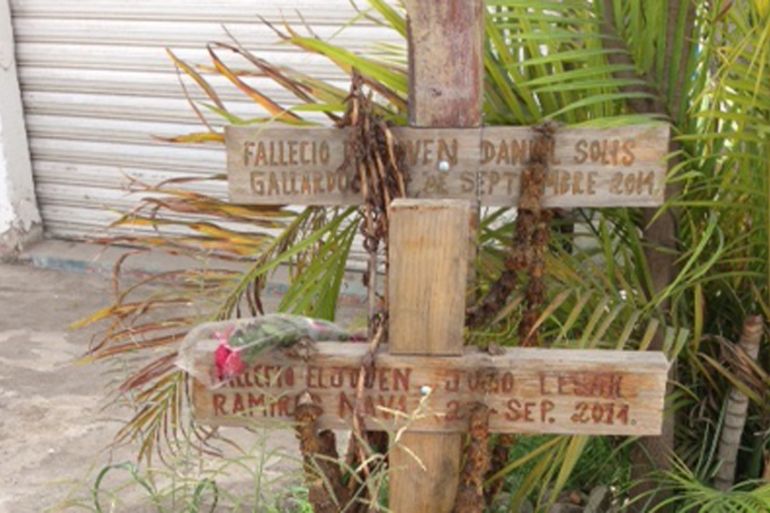Mexico one year after the kidnapping: ‘I saw it all’
Al Jazeera speaks to a witness who watched dramatic events of September 26, 2014, when 43 students went missing.

Iguala, Mexico – It was shortly before 9:30pm when carloads of heavily armed local policemen screeched to a halt, blocked the road and screamed at the local shopkeepers on the corner of Periferico Norte and Juan N Alvarez Streets to immediately lower their blinds.
“Minutes later, three Red Arrow buses carrying students who were apparently trying to escape, were forced to stop. The police pointed their rifles up at us, to warn everyone not to look, and then they started shooting at the students,” recalls Mrs X, who lives above one of the shops and who under no circumstances wants to be identified.
Keep reading
list of 4 items‘It feels personal’: Residents fight Melbourne tower block demolition plan
‘Children of the Ganges’ — The boatmen of India’s Varanasi
US senators call on Biden to sanction Sudan’s RSF over human rights abuses
Although she is still clearly frightened, she says she needs to tell the story of the night – exactly one year ago – that turned into a recurring nightmare for her, her family and indeed, much of Mexico.
Forty-three students disappeared from the town of Iguala on September 26 in an incident that shocked the world.
Some of the bullets hit our windows and we had to take shelter as far back into the house as possible. But we could hear the young men screaming: ‘We are students, we are unarmed. Help! Help!’.”
“That was the first attack. It took about half an hour. Afterwards, some of us yelled at the students to leave, but they were too stunned and didn’t know where to go. They were not from here, but from Ayotzinapa. They called some journalists to tell them what was happening. We were too terrified to move,” she says.
|
|
Less than two hours later, came the second attack, this time with men she describes as better armed and with Special Forces-style uniforms, but not part of Mexico’s official elite squads.
“They were criminals, gang members,” she insists. “Although I was hiding, I was able to see just enough for a moment.”
“After firing at them for what seemed like an eternity, I could hear some of the poor students crying, but their cries were muffled. They were being tortured. I could hear the men saying, “Shut up, you bastards”, as they beat and cut them. The students begged for help, but we couldn’t do anything. If we opened our doors, we would have been killed, too. I felt so powerless, so impotent.”
Mrs X says that it was not until the morning that she and her son opened the door.
“All the bodies and all the students were gone, but we found three fingers that had been cut off,” she said.
“My neighbour found a few more lying on the ground, as well.
“We took snapshots of them but then erased the evidence because we were afraid the men might come back and search our houses.
“All we could do for the boys was to bury their fingers under the tree you see over there.”
She pointed outside.
Wooden crosses
Two simple wooden crosses bearing the names of two students killed in the street stand as a memorial.
The rest were abducted and have never been seen again.
“I feel so much remorse for not having been able to help them. It’s been one year today. I have never told this to anyone because I am still afraid.
“But I am doing so now because the world should know that everything that the survivors have said it true: the complicity of the authorities and the criminal gangs, the corruption, the cover-ups.
“And that is just the tip of the iceberg: I can’t tell you anymore.”